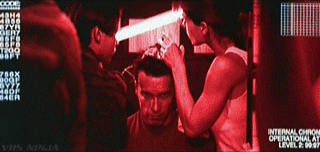
HYPER TRENDS
German philosopher Martin Heidegger was completely obsessed with the effects of technology on the human condition at large. He wrote in 1935 “When the farthest corner of the globe has been conquered technologically and can be exploited economically; when any incident you like, in any place you like, at any time you like, becomes accessible as fast as you like; when you can simultaneously “experience” an assassination attempt against a king in France and a symphony concert in Tokyo; when time is nothing but speed, instantaneity, and simultaneity . . . there still looms like a specter over all this uproar the question: what for?—where to?—and what then?” Heidegger, nearly 100 years ago, had a premonition of many of the malcontents of globalization and technology and the senseless emptiness that accompanies an interconnected world.
The pervasive influence of technology, from Heidegger’s perspective, led to people forgetting to notice that they are alive, forgetting that all being is connected, and a failure in living an authentic existence. He voiced his concerns about technology and modernity pulling us towards monotonous tasks, overwhelming us with too much information, and killing silence – predicting in 1935 the discontents of 2016 almost perfectly.


His solution to this conundrum lied in exposure to great art, as it is art that helps us remove ourselves from our ego and appreciate the independent existence of other people, ways of living, and objects. Heidegger might have been a visionary, but he did not predict that the technological apparatus would be so all consuming and totalizing that it would fundamentally alter the speed and depth with which we experience and consume art.
In 2016, the acceleration of culture and art is moving at such a pace that is nearly impossible to describe. Everything - companies, artists, human relationships - is being subsumed by the torrid pace modernity operates at. Tinder swipes and vapid Instagram celebrities are becoming our representation of reality, the symbols that guide us through both our Internet and real selves - if such a distinction even still exists. Creativity is now embedded directly into these communication systems, and the pace at which the world operates continues to grow at a dizzying rate.


Fashion– really just a manifestation of the values and currents of culture at large – is no exception to this new pace. Fashion is simultaneously art and culture, which is what makes it such a unique medium. Technology is delivering this medium to the consumer quicker than ever before. The runway to retail timeline is being moved up to instantaneity in some cases, directly engaging with consumers wishes to purchase items representing new trends and the “it” items so often associated with luxury.
Consequently, both broader fashion trends and the specific designers responsible for them are just becoming hyper-trends. They burn intensely for a brief period of time, and then are discarded to make room for the next luminous yet disposable derivative.

Despite many designers’ efforts, it is impossible not to be part of the cultural zeitgeist, even if one is firmly against it. Matthew Miller has stated, “Things are consumed far too quickly – this is one of the big killers of subcultures; things don’t have a chance to spread progressively and naturally through word of mouth or through magazines. Everyone just gets what’s going on straight to their phones, there’s no value in it anymore. Things just get consumed and six months later they’re in a museum.” The speed of fashion has severely limited a genuine, deep engagement with fashion and its references, creating a superficial and transient landscape. This lack of engagement leads to less dialogue and discourse on fashion in general, allowing the pace of fashion itself to act as a constricting force on creativity.
This lack of a real conversation has led the fashion world to draw on nostalgia and an emphasis on the repurposing and repacking of stale trends in place of genuine original design. One has to look no further than ubiquitous logo mania or the constant 90’s street wear references that characterize contemporary fashion to see the lack of creativity in the contemporary landscape. Fashion, to many designers and fashion houses, has become nearly an advertising exercise in its totality – not about the clothes, but about selling concepts, status, an imagined self and an invented tradition.


So where do the hyper-trends in fashion leave us? Maks Fus Mickiewicz, senior journalist at trend analyst the Future Laboratory, in a recent article in The Guardian, predicts that for better or worse, fashion companies must democratize their visions and stay away from vertically imposing their aesthetics on the consumer, and he models technology companies and open source software that can be constantly updated and altered as an example of a system of fashion’s future. With this, comes a simultaneous wonder and horror of the possibilities entwined with fashion and technology.
Are we ready to accept that there are no creative geniuses who should offer us visions on how to dress? Does the average person, the consumer, really offer the best possible vision? There are no answers to these questions, but what is clear is that Fashion, under the grips of technology, is certainly still in its beta stage. What will last? What will we look back upon with wonder, and what with disgust? One thing is certain, and that is that genuine creativity and vision are finite resources, and they must strive to find a space to exist amongst the mayhem and hyper-trends of the 21st century.

Recommended For You

